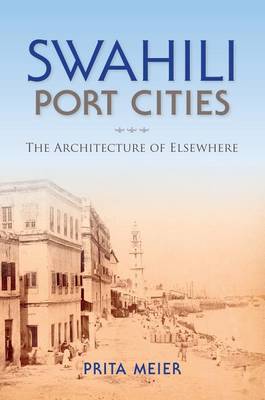
Stock image for illustration purposes only - book cover, edition or condition may vary.
Swahili Port Cities: The Architecture of Elsewhere
Prita Meier
€ 111.90
FREE Delivery in Ireland
Description for Swahili Port Cities: The Architecture of Elsewhere
Hardback. Series: African Expressive Cultures. Num Pages: 248 pages, 16 color illus., 80 b&w illus. BIC Classification: 1HFG; AMX; HBJH; JHMC. Category: (G) General (US: Trade). Dimension: 164 x 321 x 21. Weight in Grams: 544.
On the Swahili coast of East Africa, monumental stone houses, tombs, and mosques mark the border zone between the interior of the African continent and the Indian Ocean. Prita Meier explores this coastal environment and shows how an African mercantile society created a place of cosmopolitan longing. Meier understands architecture as more than a way to remake local space. Rather, the architecture of this liminal zone was an expression of the desire of coastal inhabitants to belong to places beyond their homeports. Here architecture embodies modern ideas and social identities engendered by the encounter of Africans with others in the Indian Ocean world.
Product Details
Publisher
Indiana University Press
Format
Hardback
Publication date
2016
Series
African Expressive Cultures
Condition
New
Number of Pages
248
Place of Publication
Bloomington, IN, United States
ISBN
9780253019097
SKU
V9780253019097
Shipping Time
Usually ships in 7 to 11 working days
Ref
99-1
About Prita Meier
Prita Meier is Assistant Professor of Art History at the University of Illinois at Urbana-Champaign.
Reviews for Swahili Port Cities: The Architecture of Elsewhere
Meier's book Swahili Port Cities provides an invaluable and unique contribution to understandings of the complex history intertwining places, objects, and people along the littoral fringe of present-day Kenya and Tanzania. In so doing, it provides a solid foundation for scholars in any discipline investigating similar questions elsewhere.
H-AMCA
Meier's book is a vital addition to the field, demonstrating the importance and complexity of Swahili architecture and material culture in the modern era and the insights they offer into wider issues of identity and politics.
Abe Journal
Swahili Port Cities is an original, well-researched, and nicely crafted reading of the architectural and urban histories of a rare East African Islamic universe and its related aesthetic ways, which are somewhat removed from the worlds of Middle Eastern Islam and its architecture. At the same time, this universe challenges our received constructions of things African.
Journal of the Society of Architectural Historians
This well-written, well-researched book offers a careful argument about architectural history and its cultural contestations along the Swahili coast, with emphasis on the city of Mombasa.
Journal of African History
Overall, Meier's text is beautifully written, comprehensive, and convincing. There are moments when her data seem slightly miscellaneous, but this is a particular challenge of interdisciplinary work. The text is of great value to scholars of East Africa in a number of fields, including archaeology, anthropology, history, and art history, and those interested in material culture and spatial studies more generally.
African Archaeological Review
H-AMCA
Meier's book is a vital addition to the field, demonstrating the importance and complexity of Swahili architecture and material culture in the modern era and the insights they offer into wider issues of identity and politics.
Abe Journal
Swahili Port Cities is an original, well-researched, and nicely crafted reading of the architectural and urban histories of a rare East African Islamic universe and its related aesthetic ways, which are somewhat removed from the worlds of Middle Eastern Islam and its architecture. At the same time, this universe challenges our received constructions of things African.
Journal of the Society of Architectural Historians
This well-written, well-researched book offers a careful argument about architectural history and its cultural contestations along the Swahili coast, with emphasis on the city of Mombasa.
Journal of African History
Overall, Meier's text is beautifully written, comprehensive, and convincing. There are moments when her data seem slightly miscellaneous, but this is a particular challenge of interdisciplinary work. The text is of great value to scholars of East Africa in a number of fields, including archaeology, anthropology, history, and art history, and those interested in material culture and spatial studies more generally.
African Archaeological Review
